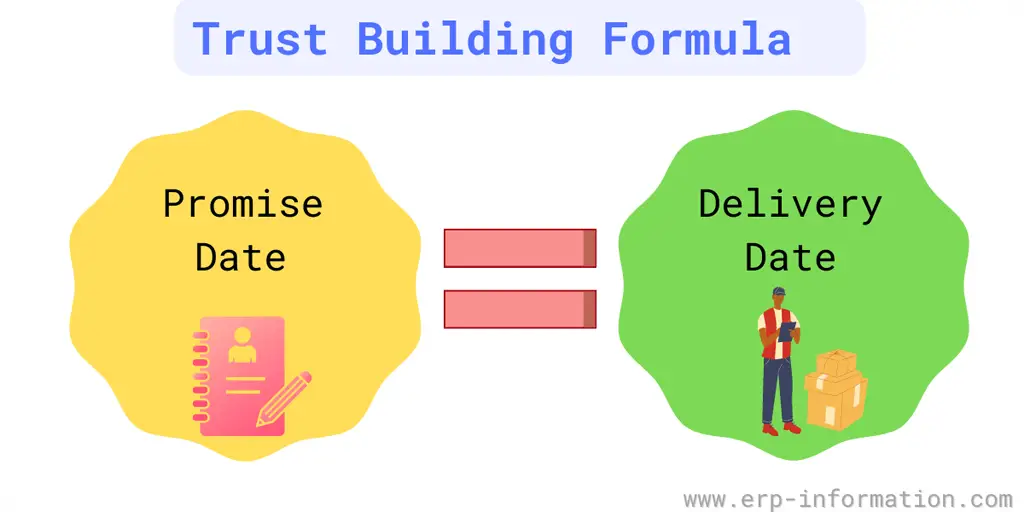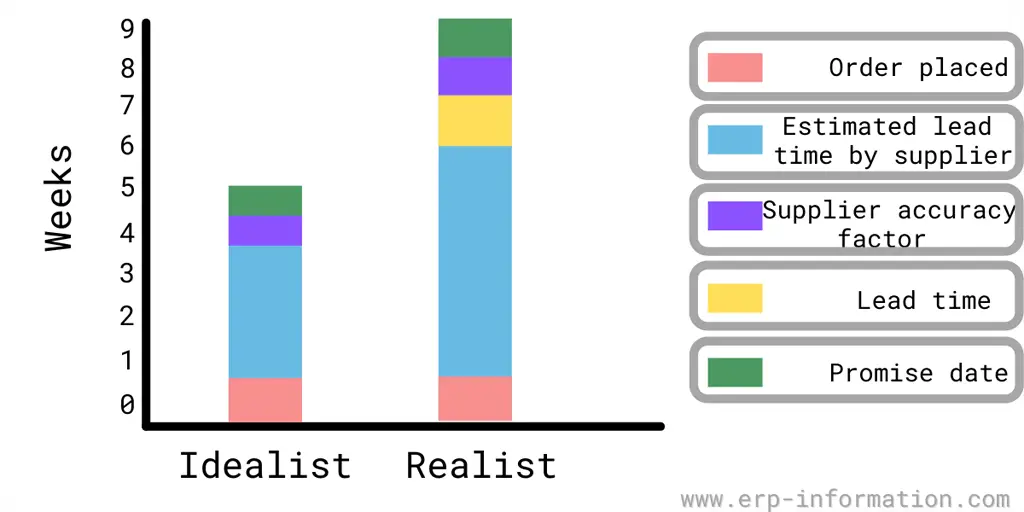Show Promised a Continuation 20 Years Later and Delivers

The promise date or ship date is an important term in many industries. It is a critical term that specifies the date of delivery of an order.
This date is given to customers to deliver their orders, and vendors must stick to this commitment. However, either party may agree to change the date before it becomes effective.
This blog post will provide definitions and explanations of this critical term. It also covers calculation, lead time estimation, and do's&don'ts.
Definition
The promise date is the shipment date committed to by a vendor. In some industries and contracts, it is the delivery date at the customer site.
It is generally a date given to the customer to deliver their orders.
It can also be regarded as the date the vendor delivers the shipment and is sincerely maintained by constructing an MPS which keeps a tab on all the upcoming promise dates within a given time fence.
It is usually an assumed date that considers the time required for completing all the processing activities and the time needed for the finished product to be available.
The company also must converse with the customer before deciding on the promise date.
How does it help to build up trust?

- Prompt delivery date by the company shows confidence and transparency in work. In addition, it sends a positive message about the company's reputation.
- If the customer is kept waiting for an extended period without a promised delivery date, they might doubt the firm's competency, even though there has been no delay.
- A good follow-up routine on dates that are due or missed due to unforeseen situations is essential. This way, the customer knows that the firm is into the job and has taken full responsibility until the delivery is complete.
- Good customer service is vital and does not go unnoticed.
- Customer satisfaction is also a company policy. A good reputation and positive reviews depend primarily on customer feedback from on-time deliveries. In addition, it boosts the company's vendor rating.
The promised delivery date is a critical component. It is generally managed by a computer-generated system and is regularly followed up.
An unmet delivery date needs to be appropriately addressed with valid reasons and the following delivery date. If not, it can result in the customer leaving for another seller with a more sincere track record.
How do you calculate the Promise Date?
We can calculate it by considering Available to promise (ATP) and capable to promise (CTP). That is because ATP and CTP are fundamental concepts of business.
Available to promise allows you to calculate dates based on the reservation system. In addition, it checks the availability of unreserved items in the inventory.
With the help of this information, a company can calculate it easily.
Capable to promise allows you to check the resource availability like workforce equipment and raw materials to meet customer orders.
Lead time estimation and promise date
It is essential to estimate the lead time and find an accurate promise date.
There will be two kinds of vendors. One is an idealist, and another is a realist. The below image shows the difference between these two types of vendors' estimated lead times.

This image shows two scenarios. First, when an idealist vendor estimates the promise date, he does not consider the accuracy factor.
For example, assume that the customer placed the order in 1st week, and he estimated the lead time as 4 to 6 weeks.
As an optimist or idealist, he adds order placed date, estimated lead time (minimum side of the range), and inbound, outbound transit time. Finally, it gives the promised date in the 5th week.
When the vendor is a realist, he adds the order placed date, estimated lead time(top side of the range), supplier accuracy factor, and transit time. Then he gives a promise date in the 8th week.
Few do's and don'ts of promise date
- Do not assign an arbitrary date without consulting the lead time required for your system to generate a finished product.
- Ask the customer for a probable delivery date according to their comfort before assigning your possible date. Simply inquiring about their convenience is fine.
- Do not forget to follow up on backorders, which should be met soon.
- It is no use giving delivery dates one after the other to keep account of your books. It will only give rise to anger and discontent. Try to meet the dates anyhow.
- Keep the proceeding of your company clean. The customer must be informed about the number of business days you require, and under no situation should they be given a close date to impress.
The promised delivery dates must also consider the distance you need to deliver (if you are delivering to their homes) and the lead time required for your vendor to travel.
An on-time delivery also shows how efficiently your system works, which might bring back the customer for another order.
Conclusion
The promise date provides benefits for both vendors and customers. Vendors can ensure they provide accurate lead times and commit only to what they know they can deliver.
Customers receive order confirmations with specific dates, allowing them time-frame planning for their business operations or personal lives.
Hoping this post will help you understand the term better.
Source: https://www.erp-information.com/promise-date.html
0 Response to "Show Promised a Continuation 20 Years Later and Delivers"
Post a Comment